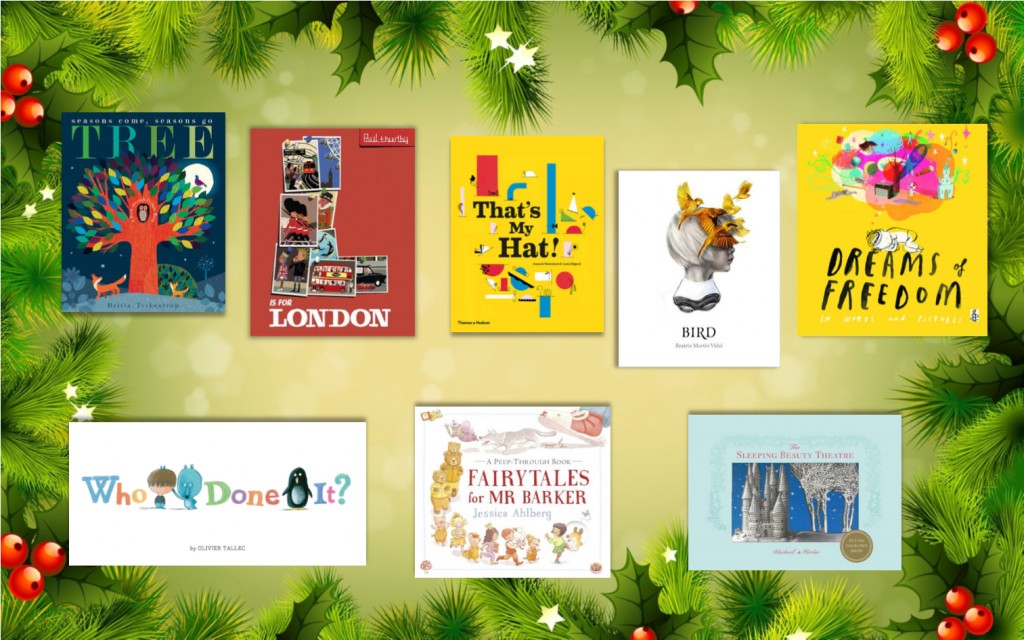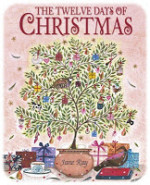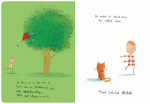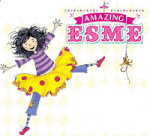You know me, I am VERY partial to a good picturebook. Here is a selection of beautiful picturebooks to suit all ages.
Olivier Tallec is one of my favourite French illustrators, ever since I came across his excellent Rita et Machin series (Rita and Whatsit) and his brand new title Who Done It? (Chronicle Books), with extra thick front and back covers is perfect for preschoolers. No narrative per say is present in the book but rather a series of plates, and for each plate the reader is asked a question about a lineup of characters, which range from “Who didn’t get enough sleep?” or “Who ate all the jam?”. Some of those expressions are rather hilarious, and there is much fun to be had (including mimicking them) but nonetheless allows young children to begin to acquire to the useful skill of reading people’s expressions. The horizontal format makes this book all the more wacky and fun.
It has been three years since Jessica Ahlberg’s stunning The Goldilocks Variations , for which she collaborated with her father, the great Allan Ahlberg, and it with great delight that I discovered her latest title, Fairy Tales for Mr Barker (Walker Books), in which Lucy chases her dog Mr Barker through some rather familiar looking houses. Brimful of fairy tale characters for young children to spot and recognise, and with intriguing windows to peep-through, this is a truly wonderful book with a particularly warm and child-friendly palette of colours. Jessica Ahlberg has her mother knack for detail and manages to merge modern children and traditional fairy tale setting beautifully.
Another very special peek-through book to have come out this year is Britta Teckentrup and Patricia Hegarty’s splendid Tree (Little Tiger Press). Teckentrup uses a central peek-through hole as a feature which allows us to follow the same tree through the seasons. Though the book shows us the life cycle of a tree and how seasons affect flora and fauna, this is so much more than simply an information book. The simple rhyming text is memorable and the artwork is simply striking. Teckentrup’s use of colour conveys simply, almost peacefully, the beauty of nature . A real gem and one of my favourite picturebooks of the year.
That’s My Hat by Louis Rigaud and Anouck Boisrobert (Thames & Hudson) is one impressive pop-up book. It follows a little boy across the city as he chases after his hat. Each place he visits is made of the same geometrical shapes and is brought to life thanks to intricate pop-up elements. It is clever, aesthetically pleasing thanks to colour being used only for the geometrical shapes and it is really fun. There is definitely much creative inspiration to be taken from this book for young readers, both in the way shapes are used and as well as having a go at making pop-ups. Another treat from Thames and Hudson and definitely for slightly older readers is The Sleeping Beauty Theatre by renown book-cut sculptor Su Blackwell and paper engineer Corina Fletcher. This is a stunning paper theatre which allows children to create their own scenes, whether they want to follow traditional narratives (there is even a script to follow if they so wish) or create something completely new. A truly immersive experience into storytelling, but a bit of dexterity is definitely needed to handle it. It also has much grown-up appeal, as have these next two titles. Paul Thurlby had many adult fans before he began creating picturebooks (his début being Alphabet). In his latest title L is for London (Hodder Children’s Books), he uses his signature bold style to showcase some of London’s best-loved landmarks and use them to create an alphabet book. From Abbey Road to London Zoo, each double-spread includes information about the landmark as well as one Thurlby’s iconic illustrations. It oozes style yet manages to remain really child-friendly. The large format makes both perfect to spot on a shelf or perfect as a coffee table book.
Bird by Beatriz Martin Vidal (Simply Read books) is an unusual wordless picturebook which is unbelievably striking visually. The artwork is mainly rendered in grayscale tones apart from the odd touch of colour. While many wordless books follow a linear narrative, it is not obvious with Bird (though the blurb hints at a metaphor for embracing one’s imagination) and this makes the narrative possibilities and interpretations endless. This can feel daunting to some adults, but this book is worth a look just for the beauty and lyricism of its artwork. And anyone admiring the illustrations for long enough will undoubtedly eventually find ‘their’ story.
Finally, at a time where we tend to over indulge, there is no harm in reminding ourselves that not everyone is as lucky. Dreams of Freedom in Words and Pictures (Frances Lincoln) was published earlier this year in association with Amnesty International and combines words of renown human rights heroes such Nelson Mandela and Aung San Suu Kyi and activists together with artwork from international illustrators including Oliver Jeffers, Barroux and Birgitta Sif. It is a stunning, important, volume (and accompanies and earlier volume, We Are All Born Free) and at a time when we are witness to so much suffering, it is a powerful child-friendly way to introduce human rights to young readers.
Source: review copies from publisher






